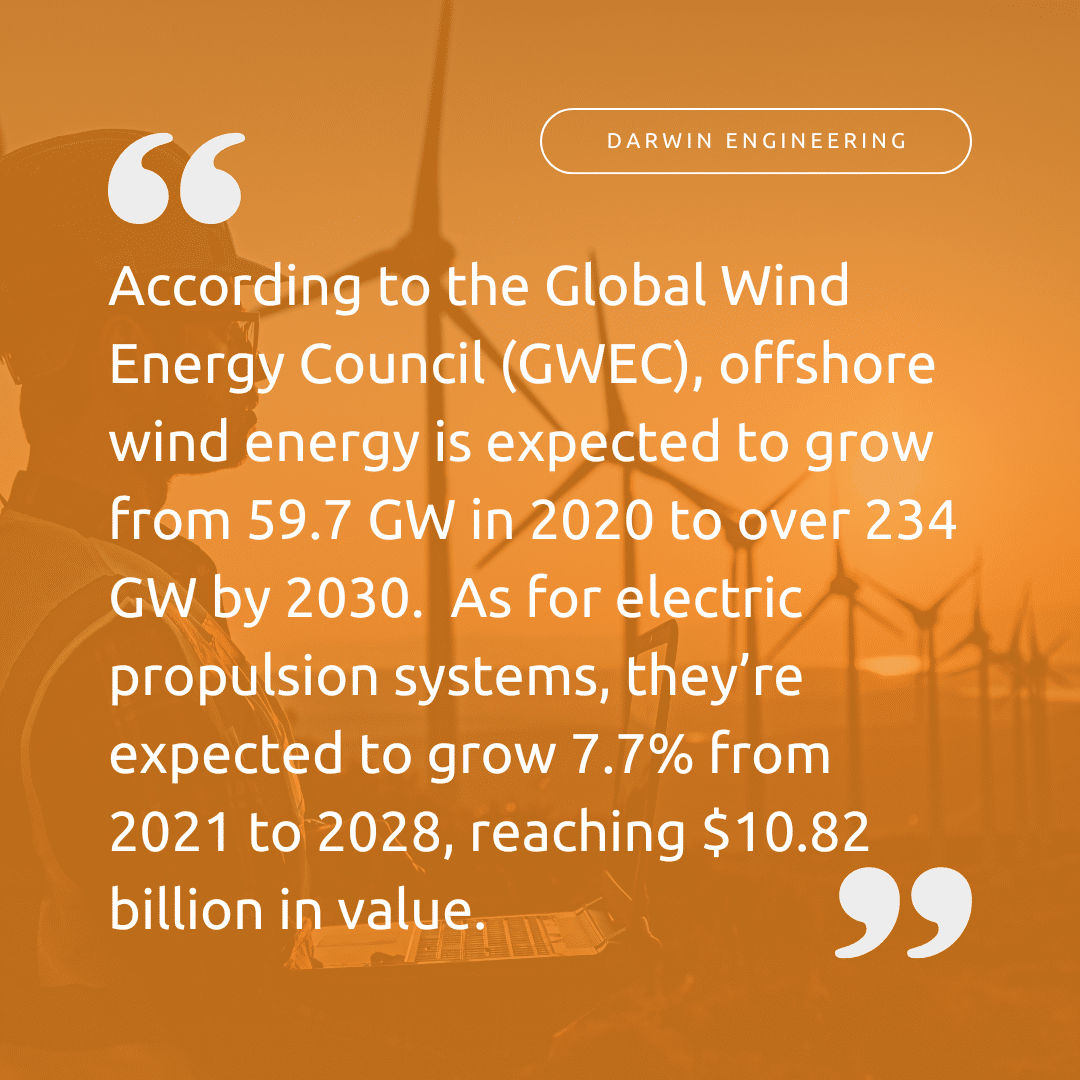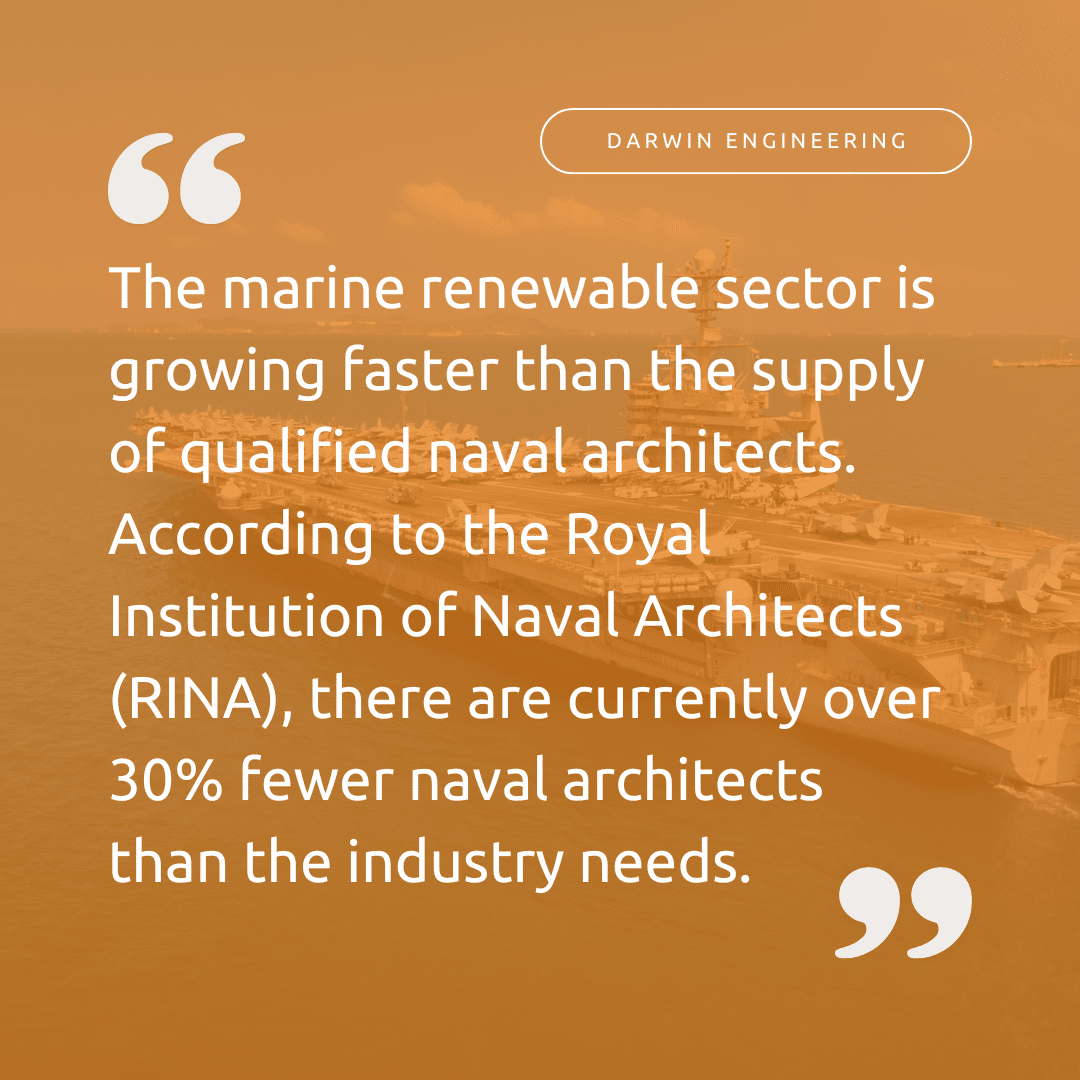The global shift towards sustainability is no longer a distant vision; it is rapidly becoming a tangible reality. Innovations like wind propulsion and electric propulsion systems are transforming the way we think about the future of maritime industries, nowhere more so than in the marine renewables sector. As governments and businesses push for greener, more sustainable solutions, the demand for skilled professionals, particularly in naval architecture and hydrodynamic engineering, is surging. There’s a growing talent gap, however, which could slow down the sector’s progress.

The Growth of the Marine Renewable Sector
With the world trying to reduce its reliance on fossil fuels and lower greenhouse gas emissions, the marine renewables sector is booming. According to the Global Wind Energy Council (GWEC), offshore wind energy is expected to grow from 59.7 GW in 2020 to over 234 GW by 2030. As for electric propulsion systems, they’re expected to grow 7.7% from 2021 to 2028, reaching $10.82 billion in value.
As a result of these innovations, maritime operations will reduce their carbon footprint and be more efficient and sustainable. For example, wind propulsion systems can cut fuel consumption by up to 20%, reducing emissions and costs. Additionally, electric ships, which are expected to make up 10% of the global fleet by 2030, offer a viable alternative to traditional fossil fuel engines, especially for short-haul routes.

The Rising Demand for Naval Architects
As the marine renewables sector grows, so does the demand for naval architects and hydrodynamic engineers. In addition to being functional, these professionals ensure that new technologies are efficient and safe. From 2020 to 2030, the Bureau of Labor Statistics predicts a 6% growth in marine engineers and naval architects. This growth is driven largely by the increasing focus on renewable energy and the modernization of the global fleet.
Despite this, the marine renewable sector is growing faster than the supply of qualified naval architects. According to the Royal Institution of Naval Architects (RINA), there are currently over 30% fewer naval architects than the industry needs. A shortage is particularly acute in specialized areas like hydrodynamic engineering, where the expertise needed to optimize renewable energy systems is in high demand but limited.
The Impact of the Talent Gap
The talent gap in naval architecture and hydrodynamic engineering poses a significant challenge to the marine renewable sector. If the industry doesn’t have enough qualified professionals to meet demand, it risks falling behind in its efforts to develop and deploy sustainable technologies. This could slow the progress of decarbonization initiatives and hinder the adoption of renewable energy solutions in maritime operations.
In addition, top talent is hard to come by. A study by DNV GL indicates that up to 40% of companies in the marine renewable sector are struggling to fill critical engineering positions, leading to increased project costs and delays. This competition can drive up salaries by as much as 20%, further straining budgets and complicating the industry’s efforts to keep pace with rapid technological advancements.
Addressing the Talent Shortage
Recruiting and retaining skilled professionals in naval architecture and hydrodynamic engineering is key to bridging the talent gap. Investment in education and training programs could help develop the next generation of engineers, as well as competitive salaries and benefits to attract top talent. Partnerships between industry and universities have been shown to increase the pipeline of skilled graduates by up to 15%, helping ease the shortage.
In order to address the skills shortage, industry, academia, and government have to work together. This collaboration will ensure that the marine renewables sector has the talent it needs to grow and make the transition to a more sustainable future. For instance, the UK government recently pledged £160 million to support the training and development of engineers in the renewable energy sector, a model that could be copied elsewhere.
How can we help?
Are you looking for a career move that will allow you to contribute to a sustainable future? If so, we have several opportunities that might interest you. Please reach out to us for an informal chat about your options.
Alternatively, if you’re facing a talent shortage, we have a wide range of solutions that can help you meet your hiring targets.
If are looking to build your marine renewables team, get in touch with me via LinkedIn https://www.linkedin.com/in/jamesstares/
Alternatively, if you are looking for a job within the marine renewables sector, head over to our job page.




